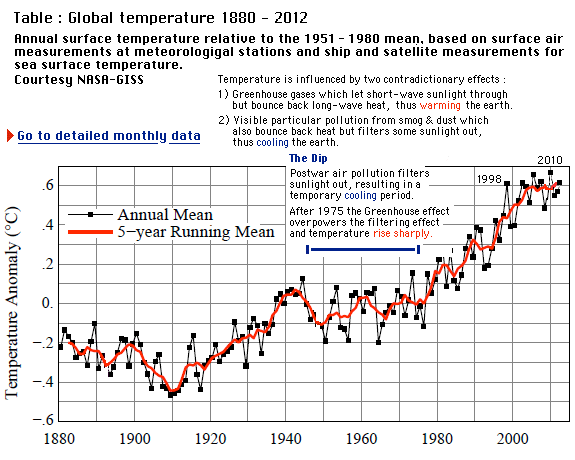
|
Tracking the world's average temperature from the late 19th century, people in the 1930s realized there had been a pronounced warming trend. During the 1960s, weather experts found that over the past couple of decades the trend had shifted to cooling. ( See :
The dimming of the Sun )
With a new awareness that climate could change in serious ways, many scientists predicted a continued cooling, perhaps a phase of a long natural cycle or perhaps caused by human pollution of the atmosphere with smog and dust. Others insisted that the effects of such pollution were temporary, and humanity's emission of greenhouse gases would bring warming over the long run. This group's views became predominant in the late 1970s. As global warming resumed it became clear that the cooling spell (mainly a Northern Hemisphere effect) had indeed been a temporary distraction. When the rise continued into the 21st century with unprecedented scope, scientists recognized that it signaled a profound change in the climate system. |